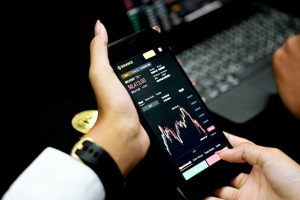Forex trading is one of the most dynamic and profitable ventures in the financial markets. It involves buying and selling currencies with the aim of making a profit. One of the key factors that traders need to consider when trading forex is volume. Volume is the number of trades executed in a particular currency pair during a specific period. Understanding how to measure volume in forex can help traders make informed trading decisions and increase their chances of success in the markets.
There are different ways to measure volume in forex, but the most common method is through the use of trading indicators. Trading indicators are mathematical algorithms that are applied to price data to generate trading signals. They can also be used to measure volume in forex. Some of the popular trading indicators used to measure volume in forex include the Accumulation Distribution Line (ADL), On-Balance Volume (OBV), and the Volume Weighted Average Price (VWAP).
Accumulation Distribution Line (ADL)
The Accumulation Distribution Line is a volume-based indicator that is used to measure the flow of money in and out of a currency pair. It is calculated by adding the volume of each trade to a running total if the price closes higher than the previous close or subtracting the volume if the price closes lower than the previous close. The ADL is plotted as a line on a chart, and traders can use it to identify buying and selling pressure in the market.
On-Balance Volume (OBV)
The On-Balance Volume indicator is another popular volume-based indicator used in forex trading. It measures the buying and selling pressure in the market by adding the volume of each trade to the indicator if the price closes higher than the previous close and subtracting the volume if the price closes lower than the previous close. The OBV is plotted as a line on a chart, and traders can use it to identify trend reversals and confirm price movements.
Volume Weighted Average Price (VWAP)
The Volume Weighted Average Price is a technical indicator that is used to measure the average price of a currency pair over a specific period, weighted by the volume of each trade. It is calculated by multiplying the price of each trade by the volume of that trade, adding up the total of these values, and dividing it by the total volume of all trades. The VWAP is plotted as a line on a chart, and traders can use it to identify support and resistance levels in the market.
Other Ways to Measure Volume in Forex
Apart from trading indicators, there are other ways to measure volume in forex. These include:
1. Price Action Analysis: Traders can use price action analysis to measure volume by observing the price movement of a currency pair. If the price is increasing, and the volume is high, it could be an indication of bullish sentiment. Conversely, if the price is decreasing, and the volume is high, it could be an indication of bearish sentiment.
2. Order Book Analysis: Traders can also measure volume in forex by analyzing the order book. The order book shows the current buy and sell orders for a currency pair, and traders can use it to identify areas of support and resistance in the market.
3. Time and Sales: Time and Sales is a feature provided by most trading platforms that shows the time, price, and volume of each trade executed in a currency pair. Traders can use this feature to measure volume in forex by analyzing the volume of trades executed at different price levels.
Conclusion
In conclusion, measuring volume in forex is essential for traders who want to make informed trading decisions. Trading indicators such as the ADL, OBV, and VWAP are popular methods used to measure volume in forex, but traders can also use price action analysis, order book analysis, and time and sales to measure volume. Whatever method traders use, it is important to remember that volume is just one of the many factors that should be considered when trading forex. Traders should also pay attention to other factors such as price action, trend analysis, and fundamental analysis to make informed trading decisions.





